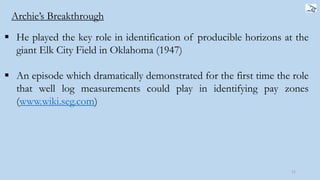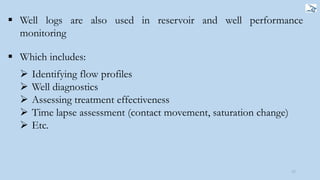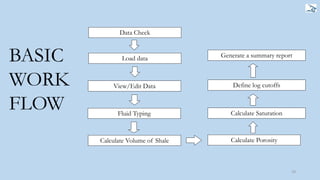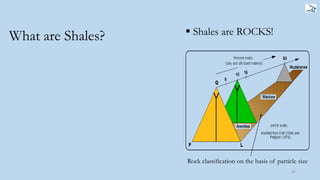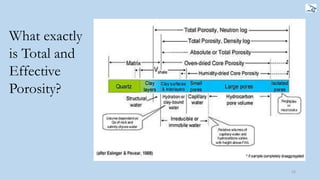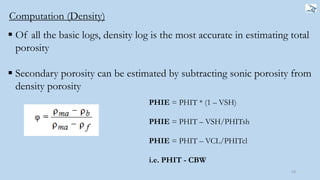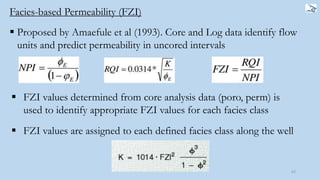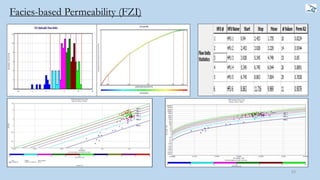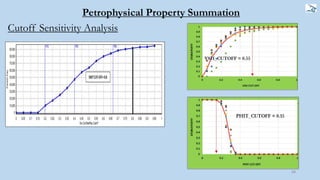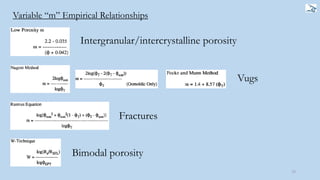Well log interpretation involves using well log data to estimate reservoir properties. It has been used since the 1920s to qualitatively identify hydrocarbons and is now a quantitative tool. A key figure was Gustavus Archie who in the 1940s established the field of petrophysics by relating well logs to core data. His work allowed properties like porosity, permeability and fluid saturation to be estimated. A presentation on well log interpretation outlined the workflow including editing logs, estimating properties like shale volume, porosity, permeability and fluid saturation, and presented two case studies analyzing different carbonate reservoirs.










